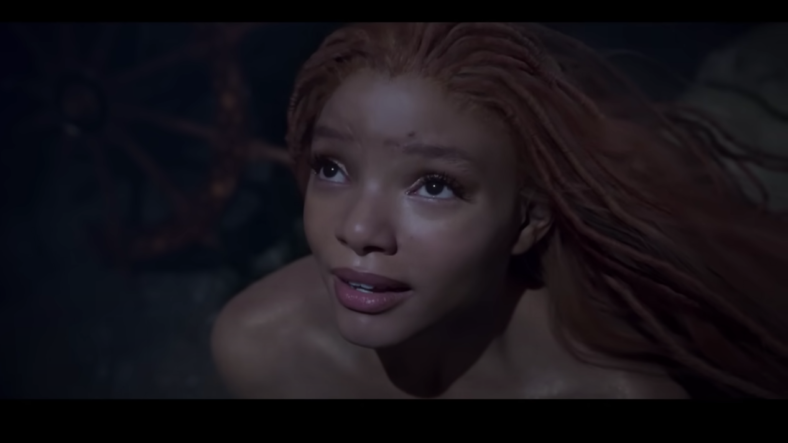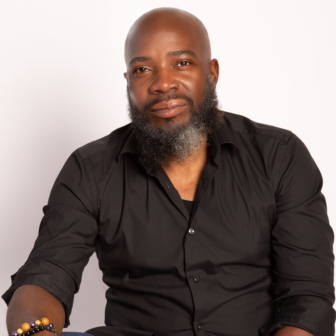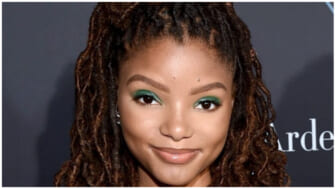
Editor’s note: The following article is an op-ed, and the views expressed are the author’s own. Read more opinions on theGrio.
I can’t believe I’m saying this, but I understand the anger over a Black mermaid.
I know companies have the right to handle their intellectual property in whatever manner they see fit, but Disney’s decision to remove images of Caucasian mermaids from books, films and streaming platforms is tantamount to white erasure. I was flabbergasted when I learned that Amazon delivery drivers are breaking into suburban homes and forcing people to watch a documentary about the hobbit homeboys from Middle Earth. But I knew that corporate overreach had finally gone too far when I heard about HBO’s new Game of Thrones spinoff, Madea Goes to Westeros.
To be fair, I haven’t actually verified any of the above information. But if the unseasoned 1989 version of The Little Mermaid still exists, then why would anyone be angry about the new live-action remake? The only logical reason why Lord of the Rings fans would be upset about the existence of Black hobbits is that they were being forced to watch Amazon’s new Rings of Power series. Why would anyone complain about a House of the Dragon character being the CEO of a successful Black-owned shipping company if the character’s skin color was never mentioned in the source material?
As ridiculous as these manufactured controversies may seem, this outrage has little to do with diversity, inclusion or the “woke” agenda of corporate America. However, centering the public discourse on a few aggrieved weirdos obscures a more important topic of discussion. We should be talking about the racial economics that held Hollywood hostage for more than a century at the exclusion of Black artists and creators. More importantly, we should know what happened to shift this dynamic.
So let’s talk.
Has Hollywood gone “woke”?
First, it is important to disabuse ourselves of the idea that Hollywood is filled with progressives who want to push their liberal agenda on the American public. While we often use the term to condense the entire film, television and entertainment industry down to a one-word nickname, there really is no “Hollywood.” The term is just a metaphor for global conglomerates that exist to sell products and services at a profit. An estimated 90 percent of media consumed in the United States reportedly comes from six corporations and, like most large corporations, the senior leadership at AT&T, Comcast, Fox, Paramount Global and Walt Disney are overwhelmingly white and male (Sony is headquartered in Japan). In fact, in 2019, more than 90 percent of the executives at the major studios were white, according to UCLA’s 2020 Hollywood Diversity Report (the 2022 report doesn’t have data on studio executives).
Aside from the lack of racial, ethnic or gender diversity, people who serve as corporate executives are about 69 percent Republican and 31 percent Democrat. According to data from the National Bureau of Economic Research, these C-suites are skewing more conservatively every day. Corporate America’s CEOs also donate more heavily to GOP politicians. But somehow, we’re supposed to believe that the powerful, white conservative executives in media have an entirely different belief system than the powerful, white conservative decision-makers in every other industry in America. And, according to this fictional narrative, these “woke” bigwigs are willing to risk their careers, their social capital and the profits of their companies on Africanized mermaids. Make it make sense.
Well, actually, that’s exactly what happened.
A brief history of white media consumption.
Remember when there were only four networks and everyone gathered around the television to watch shows like The Fresh Prince of Bel-Air or, even more recently, Scandal? Remember when Denzel was the biggest star in the world and movie casts looked like America? In 1993, there were eight primetime shows with Black lead characters! What happened to those good old days when television was so diverse?
Well, first off, that never happened.
There isn’t a millisecond in the history of American media where onscreen content reflected the demographics of the country. For instance, in that heralded multicultural 1992-93 season, there were 96 primetime shows and only eight had Black leads. When theGrio looked at the top 50 films released that year, only eight had a nonwhite lead.
To understand what happened, you must first understand three facts:
- White people are overrepresented in media: In 2019, white people were 60 percent of the U.S. population. But in the Wypipo Cinematic Universe, 76 percent of the lead characters on broadcast television and 72 percent of the lead actor in theatrical films were white, according to UCLA’s 2020 study on diversity in Hollywood.
- White people don’t watch diverse shows. A 2011 study on how race influenced movie audiences found that white audiences were less interested in films with “minority cast members.” Social neuroscientists have also conducted research that shows that white filmgoers are less likely to empathize with Black characters who perform the exact same actions as white characters. Curiously, those same studies show that this phenomenon is only true for white audiences. Although non-white audiences prefer to see someone that looks like them on television, they are also willing to consume content that is whiter than the real-world environment in which they live.
- Diverse shows perform better: The previous fact might lead some people to assume that homogenous-race movies and television shows gain larger audiences, but the opposite is true. In fact, numerous analyses show that movies with diverse casts perform better at the box office and television shows with diverse audiences get better ratings. While Black-led shows enjoy a few white viewers, non-white audiences are what turns them into top 10 rating hits. For instance, Black people are 13 percent of the U.S. population but made up 20 percent of the audience for the network sitcom Black-ish, 38 percent of viewers for Insecure, and half of the audience for FX’s Atlanta.
While these facts might be news to some people, remember that almost all the media you consume is created, packaged and marketed by six powerful entities. Not only has “Hollywood” also been aware of the information you just read but most of it was partially funded by or used data from those six companies. So why would profit-driven companies give up an estimated $10 billion to keep their content so white? There’s only one answer.
Whiteness. (You thought I was gonna say “racism,” didn’t you?)
“Networks, under enormous pressure to maximize dwindling profits, have been focusing on the more numerous and generally more affluent white households that advertisers prefer,” explains a 1998 New York Times article on the lack of diversity in primetime television. “Because whites rarely watch shows, particularly sitcoms, with largely black casts, the networks broadcast relatively few with black or even integrated casts in prime time, the three-hour block from 8 to 11 P.M. that is the most lucrative and competitive portion of television programming.”
Told ya.
Despite knowing the data, these executives basically rejected diversity in the scant hopes of creating a “blockbuster.” And, because they knew the viewing habits of white people, they cast their lots with whiteness. Yet, any objective examination of the data shows that the reason there are so few Black-led blockbusters is that there are so few Black shows. And the reason there are so few Black shows is white people don’t watch them.
To assume Hollywood’s lack of diversity is due to a secret plot by a cabal of Caucasian puppet masters gives too much credit to whiteness. Show business decisionmakers are not smarter, more educated or more talented than auto mechanics or high school gym teachers or Walmart managers. They are just whiter. But instead of fixing alternators or determining how many sweat socks they need to stock, they are deciding which movies and television shows to make. And because they are making their decisions through the lens of whiteness, they haven’t just deferred to what white people like, they pick what they like.
Then something changed.
How Hollywood went “woke.”
Although people contend that the new wave of diversity is due to the leftists who run Hollywood, we now know that isn’t true. We know that the entertainment industry is becoming more conservative. So why are the television and film industry’s products becoming more diverse? Are we seeing a shift in consciousness? Is that man who plays a scientist on a podcast right when he says that wokeness has caused us to ignore the scientific impossibility of negro mermaids?
Where’d all this woke stuff come from? And how’d they get so much power?
Well, we gave it to them.
Although Netflix is a media behemoth, its business model is not predicated on appeasing whiteness. It’s about profit. In the new media landscape, the Black people who watch Apple TV, Amazon Prime, and YouTube—companies that have as much (or more) resources as the “Big Six”—are as valuable as the white viewers. It’s almost like a democracy.
It’s not that streaming services and digital platforms care more about diversity or inclusion; they just know the facts. And now that these new companies have freed audiences from the stranglehold that only allowed white shows in the media pipeline, companies like Disney are scrambling to catch up. Their only advantage is that they already own the intellectual property that audiences are familiar with. But what can they do with all that old, white, unseasoned content?
Behold, a Black mermaid.
Faced with alienating the global majority, corporate executives had no choice but to adhere to the one unwavering principle of corporate America. As television executive Don Ohlmeyer once explained about the television industry: “The answer to all your questions is money.”
Disney isn’t any more “woke” than it was in 2009 when it made a movie about the Prince of Persia starring the great Persian actor Jake Gyllenhaal. To be fair, that was back when Disney was very conservative and Republican, back when the film division was run by a white man named Bob Chapek. Disney’s views on moviemaking and how it values diversity have probably changed since then now that the entire corporation is run by a white man named Bob Chapek.
But if you’re wondering why people who drip-wash their legs are upset about this new economic and social reality, it’s simple. Imagine how angry you’d feel if an entire industry that catered to your particular tastes and preferences suddenly stopped…
Wait. That might be too hard.
Imagine what it’s like to turn on your television or walk into a theater randomly and everyone on the screen looks like you, talks like you and behaves like you. Imagine if the characters, plots and storylines produced by the most artistic visionaries in the world were a reflection of your history, culture and skin. Imagine if no fantasy, fiction or alternate reality could ever exist unless it made you comfortable. Imagine if you and people like you were the sole arbiters of right and wrong, beauty and ugliness, good and evil. Now imagine how you’d feel if everything changed.
Still can’t do it?
OK, close your eyes.
Now envision a place where whiteness is not only supreme but the default. Catching a glimpse of yourself in media in this totally made-up dream world is not only a rarity but people who look like you are also villains because they look like you. In this fictional place, Asian conquerors, African pharaohs and even Middle Eastern messiahs are created in the image of whiteness. I know it’s tough, but picture a place where Black historical figures can’t even exist in theory unless they are whitewashed and sanitized to make white people comfortable. Here, even if you didn’t care about seeing your reflection on a screen, imagine how your schoolmates, neighbors and coworkers in this imaginary land would treat you if everything they knew about you were filtered through the lens of whiteness. Now try to imagine someone so obsessed with whiteness that the existence of a character with Black skin is more unimaginable than an animated half-human ocean dweller.
If you lived in that terrible, racist world you just constructed inside your head…
And the only way to escape was with your imagination…
Why would you consume anything made by the people who constructed that 100-year-old nightmare?
Why wouldn’t you just stay woke?

Michael Harriot is a writer, cultural critic and championship-level Spades player. His book, Black AF History: The Unwhitewashed Story of America, will be released in 2022.
TheGrio is FREE on your TV via Apple TV, Amazon Fire, Roku, and Android TV. Please download theGrio mobile apps today!
Loading the player…



